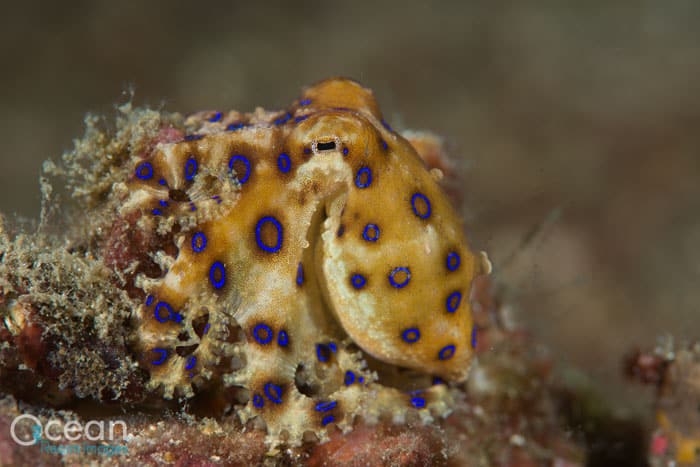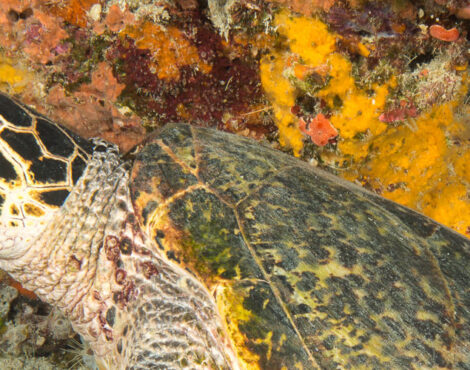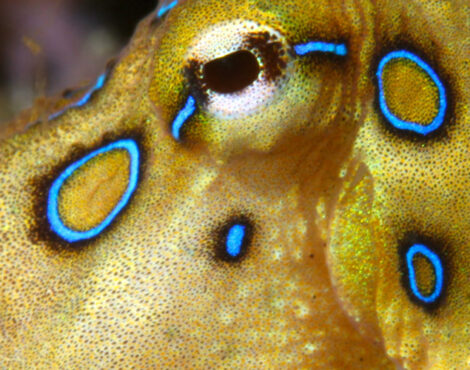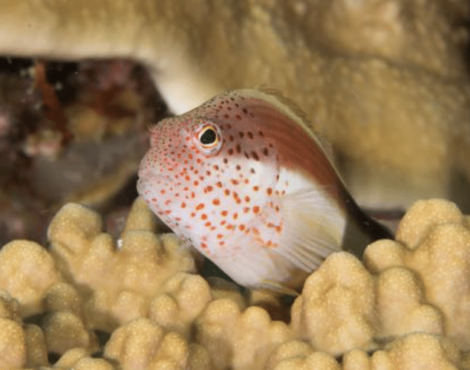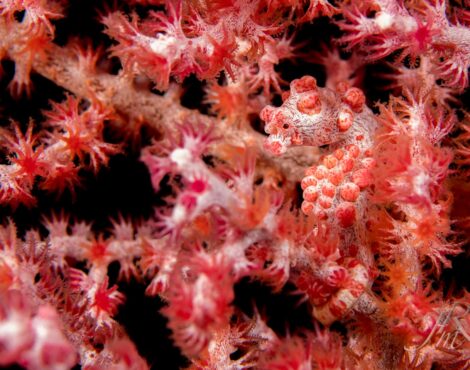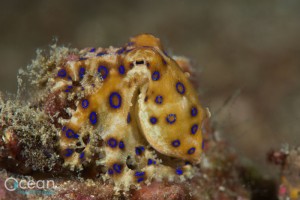
Marine Marvels of North Sulawesi: Exploring Indonesia’s Diverse Underwater Life
Indonesia has an abundance of strange marine critters coming in all shapes and sizes, and North Sulawesi, being at the heart of the coral triangle sits among the top of the charts with regards to marine diversity. When it comes to weird marine life, octopuses can probably take the title of the weirdest animals in the ocean. These amazing creatures have numerous methods for defending themselves, including expelling ink, the ability to rapidly change colors, shape and texture to become almost invisible among their surroundings, as well as being able to rapidly propel themselves through the water.
Masters of the Ocean: Octopuses and Their Astonishing Adaptations
Octopuses belong to the class ‘Cephalopoda’ along with squid and cuttlefish. There are roughly 300 identified species, which is over 1/3 of the recognized cephalopod species. They are considered to be more intelligent than any other invertebrate, demonstrating tool use, problem-solving abilities as well as having both long and short-term memory. There are numerous reports of them breaking out of their aquariums and into other ones in search of food, and there are even cases where they have boarded fishing boats, opened the hold to eat the catch!
Intelligent Invertebrates: The Fascinating Traits of Octopuses
All octopus species have 2 eyes and four pairs of arms with a beaked mouth at the centre of the arms. They inhabit a variety of different habitats, including sandy bottoms, coral reefs and pelagic waters. Bottom dwelling and coral reef octopus eat mainly crustaceans such as crabs, clams and whelks, while open ocean octopus live on a diet of fish, shrimp and other cephalopods. All known species of octopus also possess venomous saliva, which they usually inject into their prey before eating, however only the venom of the blue ring octopuses is known to be potentially deadly to humans.
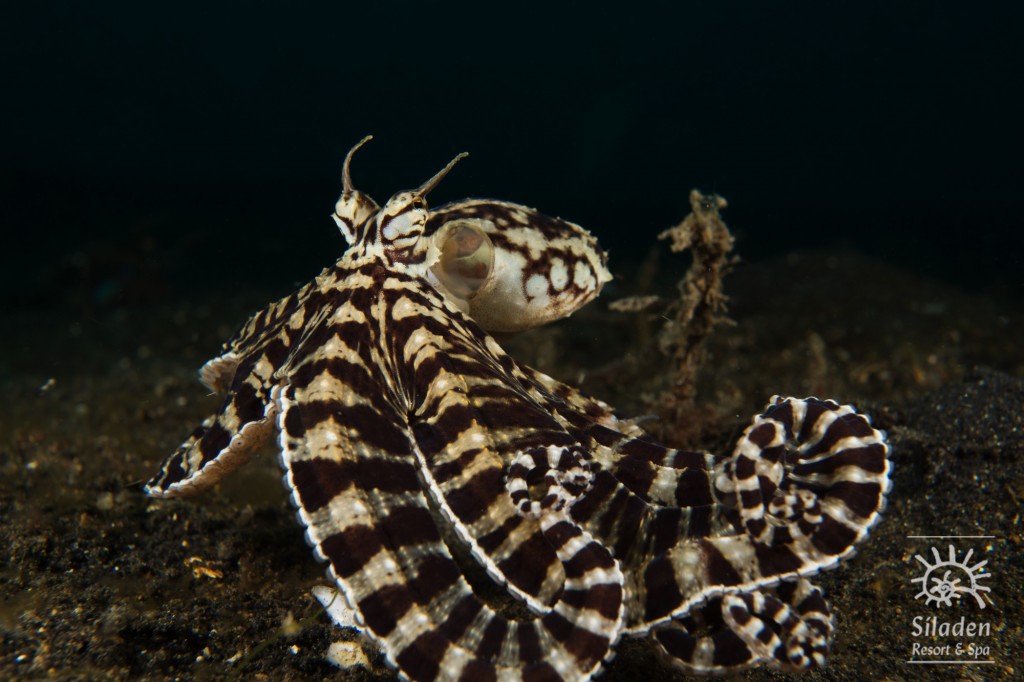
Camouflage and Communication: The Astonishing Abilities of Octopuses
One of the most notable features most people think of when talking about octopuses is their unrivalled ability of camouflage (Blending into the Background). In a split second they can completely change their colour to blend in seamlessly with their surroundings, and this effect is emphasised as certain species can use the muscles just under their skin to change the texture of their mantle (body), making them appear spiky to hide amongst seaweed, or bumpy to look just like a rock. Most octopuses use their colour changing ability to simply hide from predators, but the blue ringed octopuses do something quite different. When under threat instead of hiding away, they become bright yellow and flash blue spots, warning potential predators that attacking them could be a fatal mistake.
Mimics and Shape-Shifters: The Remarkable Adaptations of Octopuses
All octopuses have no internal or external skeleton, although a handful of species still possess remnants of a shell inside their mantle. Lacking any rigid structure allows them to squeeze through some extremely tight spaces, so yet another way that they can avoid predation. The aptly named mimic octopus (Thaumoctopus mimicus) uses this, combined with colour and texture changing to elude potential predators. They completely change their shape to mimic that of high-level reef predators such as sea snakes, or poisonous and venomous species such as lionfish or jellyfish. They have been observed mimicking up to 15 different marine organisms, which is far more than any other creature on earth. 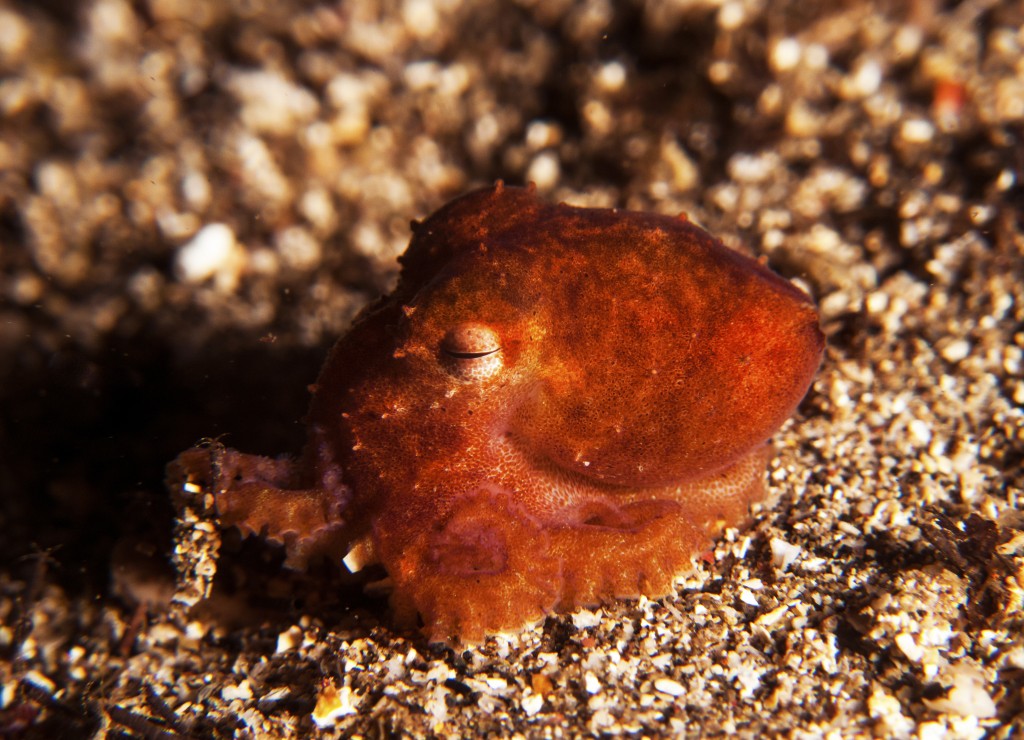
From Giant Pacific to Pygmy: The Diverse Sizes of Octopuses
The range of different sizes of octopuses is big, but nowhere near as big as the size variation of other cephalopods such as squid. The largest known species is the ‘Giant Pacific Octopus’ with an average weight of 15kg and an arm span of up to 4.3 metres (some questionable records document individuals of nearly 300kg and arm span of nearly 9 metres). Most octopus species are quite small, with the smallest known being the Wolfs Pygmy Octopus. Fully grown they weigh less than a gram and their mantle measures a maximum of 1.5cm.
Discovering Octopus Diversity: Diving Adventures at Siladen Resort & Spa
Siladen Resort & Spa’s location in the heart of Bunaken Marine Park is a great base to access both the world famous wall dives, as well as the less well known, but equally amazing muck diving on the Sulawesi mainland, and we also run regular day trips to the Lembeh rivaling (minus the crowds) muck diving sites in the Manado bay area. All of these locations offer amazing opportunities to see a variety of different octopus species. Night diving on one of Bunakens signature wall dives Lekuan III provides us with a great opportunity to spot blue ringed and reef octopuses, while muck diving on the mainland sometimes allows us to find mimics, wonderpus, long armed, coconut and many different pygmy octopuses.
Long Arm Octopus by John Madsen from Siladen Resort & Spa Videos on Vimeo.

